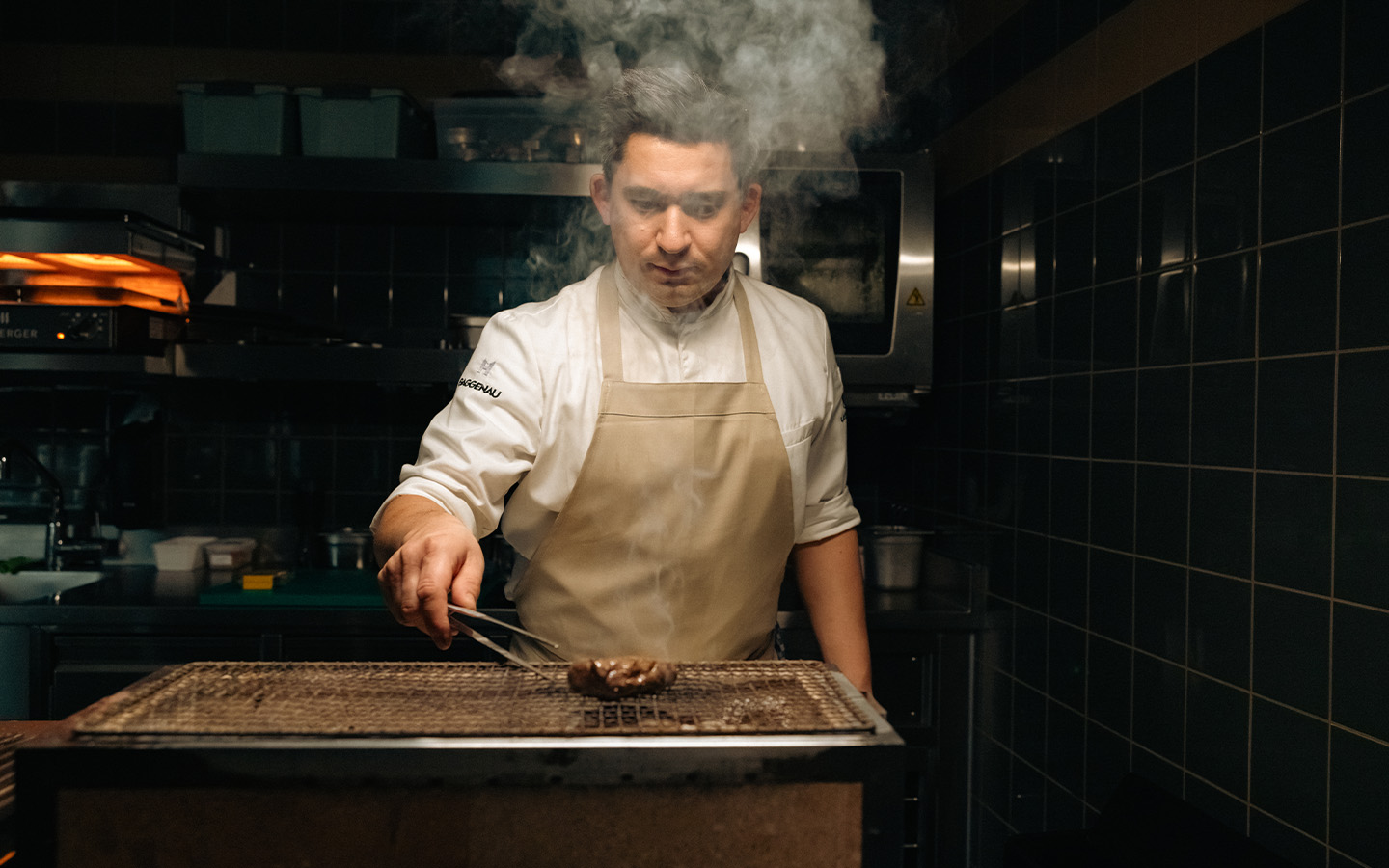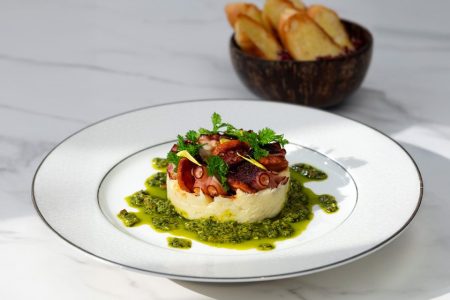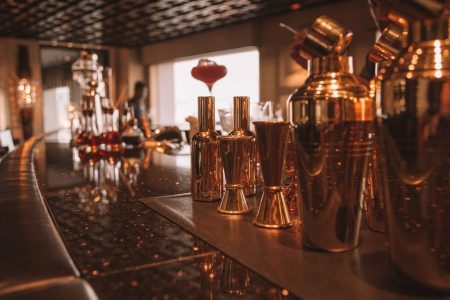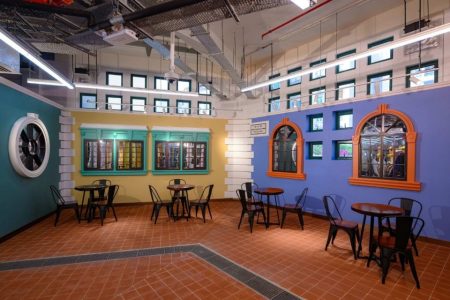Tohru Nakamura is one of a kind. The rising celebrity chef leads Munich’s two-Michelin-starred Tohru in der Schreiberei. There, he applies a kaiseki philosophy to local ingredients, seamlessly blending his Japanese and German heritage. The result is a cuisine that isn’t strictly Japanese or German, yet redefines both at the same time.
Fresh off the latest Michelin Guide to Macao and Asia’s 50 Best Restaurants list, Nakamura recently visited the SAR for Cultural Echoes, a one-night pop-up at Grand Lisboa Palace. The latest dining event to bring top global chefs to the city, the pop-up united Nakamura with Julien Tongourian of Macao’s Robuchon au Dôme, Sang-Hoon Degeimbre of Belgium’s L’air du temps and Himanshu Saini of Dubai’s Trèsind Studio.
Ahead of his culinary collaboration, Nakamura sat down with Macao News to discuss his roots, inspirations and what diners can expect from his approach to food.
Do you come to Asia often?
To be honest, when I travel to Asia, it’s almost always directly to Japan, since I have relatives and friends in Tokyo. As a child, travelling to see my grandparents in Tokyo, we didn’t do side trips to other Asian countries, so coming to Macao was a big opportunity.
Two years ago, we had an event in Manila. That was the first time I travelled to another Asian country. This is the second. It’s very cool, because there’s lots to explore.
Do you see any parallels between the colonial influences here, with the Portuguese having been in both China and Japan?
You can see lots of parallels. The Portuguese were the first foreigners to come to Japan in the 15th and 16th centuries. It’s very interesting that the first touch point with European culture in Macao and Japan was Portugal.
For me, it’s interesting to see Portuguese cuisine incorporated with Chinese. I’m always saying that I grew up with miso paste and Bavarian mustard in the same fridge. Sometimes I’m asked: ‘Do you feel more Japanese or German?’ I don’t get up in the morning and ask myself, ‘Am I Japanese or German today?’ It’s the same with the culinary culture. There’s not one part and the other part. It’s all melted together.
[See more: ‘We’re born to be translators.’ A conversation with Outcasts from the 853]
Coming from two countries or cultures generally expands your view on life. You’re open to everything. Language-wise, you can easily adapt to the sound of a foreign language. You get this understanding and respect for other cultures. I feel the same way in Macao. It’s very comfortable here, and it’s interesting to see this kind of melting pot.
What’s a unique ingredient that you like to work with?
The wood of blackcurrant bush, which we use for infusions. Gardeners pick it for us in Munich. Then we take the wood and infuse it with oil. It tastes so much more intense than blackcurrant itself. It’s like when you smell and taste tea – the smell is always more intense.
What is one Japanese cooking technique you’d love to see more chefs in Europe use?
Before I became a head chef in 2013, I spent six weeks working in Tokyo – like an internship. The way they worked with fish was totally different from how we do it in Europe.
When you work in a fine dining restaurant in Europe, it’s all about efficiency, speed. Slicing fish, for example, is like a side project. It’s not the focus. But in Japan, there’s so much care, focus and precision. You can really feel this respect toward the fish.
I think this is something we can learn from. It’s not about cooking with Japanese products like miso, soy sauce, yuzu or sake. It’s about the philosophy of cooking.
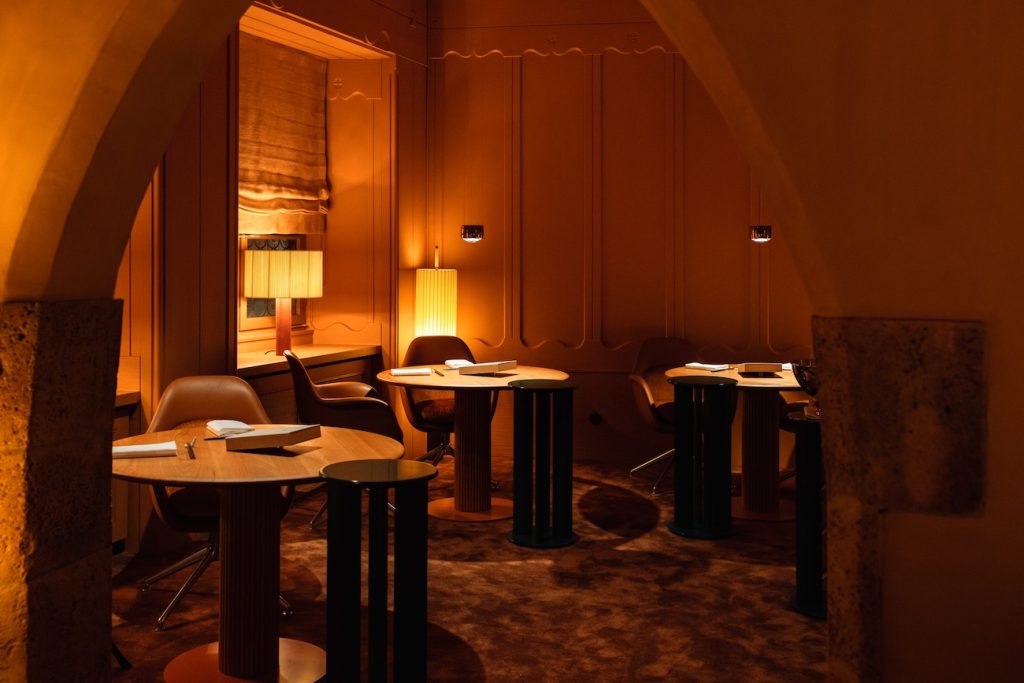
Do you have any guilty pleasures?
I’m open to everything if it’s tasty. I’m not the kind of chef who only eats luxurious things.
I really love Japanese mayonnaise – Kewpie mayonnaise – and döner kebab. I’ve also discovered that you can buy meat from [the spit] and put it on instant ramen. It’s not super guilty, because it’s something you could serve in a restaurant, theoretically.
What’s the one skill or quality that you look for in every member in your kitchen?
It’s all about the social aspect. Your skill is not that important for us as a team. When we are looking for new members for the kitchen, it’s more important they feel comfortable.
In an interview, if someone tells me they’re interested in eating and restaurants, then I’m excited, because I believe we should enjoy what we do in our spare time. When young chefs working with us take their money and go to Michelin-starred restaurants on their off days, that’s cool to see. That shows how much passion they have for our profession, for good food and restaurants. The skills they need will come from our training.
Do you have a dream location outside of Munich to host a pop-up dining experience?
It doesn’t matter where we cook. I think it’s inspiring to have the opportunity to cook for other people anywhere outside of our country.
But one place I’m always dreaming about is in Munich. We have the English Garden. It’s the biggest city garden in the world, bigger than Central Park and Hyde Park. On the southern tip of this garden, there’s a corner that’s Japanese-inspired. There’s a small lake with a mini-island and a single teahouse. If you saw just a picture of it, you would think it’s in Japan. I always imagine that having a pop-up or a restaurant there would be so amazing. The problem is it’s protected by the government, so it’s very difficult to do something there.
How would your team describe you or the way you work?
I’m strict. Having structure and discipline is essential. But I also hope my team sees me as easy to get along with, especially outside the kitchen. When we’re developing a dish, I encourage discussion about the possible combinations of products and flavours. And we move fast. If we have a great idea but don’t bring it into reality in 72 hours, the energy is gone. It’s like champagne. If you pour a glass of champagne, you should drink it as fast as possible so you still have bubbles. If you let it sit, it gets flat or boring.
[See more: ‘Macao is where it’s at.’ Gordon Ramsay talks to Macao News]
Tell us about the scallop dish you’re serving for this event.
We use all parts of the scallop. Normally that would include the roe, which we treat like katsuobushi (dried smoked bonito flakes) – we soak it in sake, smoke it and dry it. We didn’t bring it this time due to customs concerns. But we will use the shell, which isn’t common.
We roast the shells in the oven, crush them and mix them into caramelised butter. Then we take a reduced mussel juice and mix our roasted scallop shell butter into it with a touch of crème fraîche. The scallop itself is pan-fried with some of this butter.
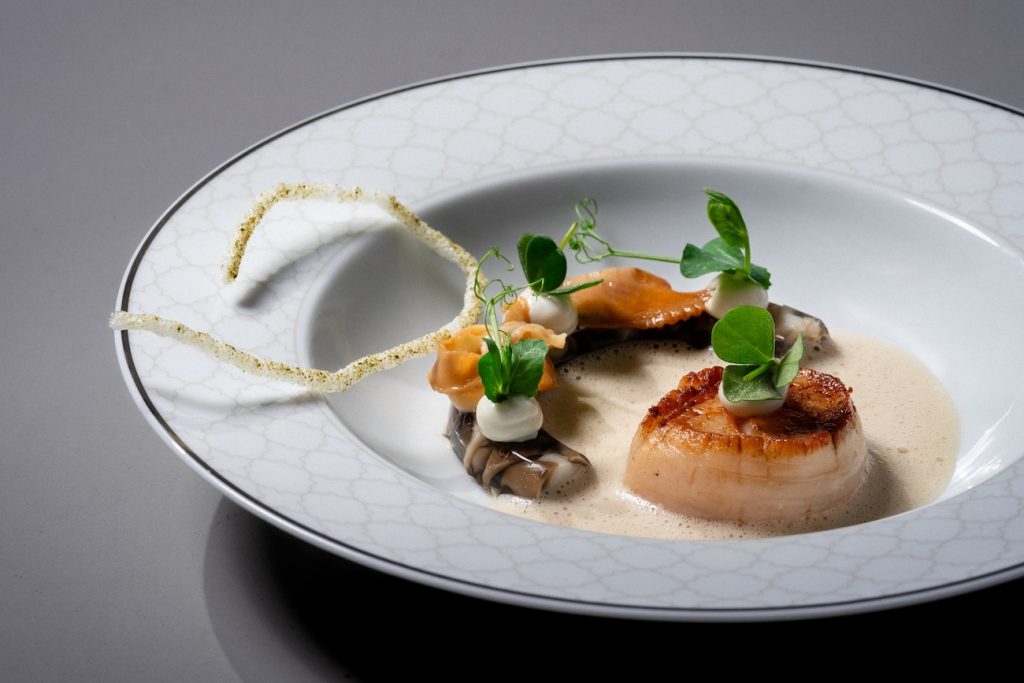
We use the scallop skirt, too. We wash it, cook it until it’s tender and marinate it with a soy ponzu. Then there’s an aspic [jelly], which is a Bavarian thing. We use razor clams and maitake mushrooms and make a jelly based on dashi. There’s also a grilled oyster emulsion. We steam the oysters in the shell, grill them on charcoal and make an emulsion with some oil – like a cream or mayonnaise.
We always focus on the sauces with our dishes. This all might sound complex, like there’s a lot of flavours going on, but we aim for harmony on the plate.
What do you hope that guests in Macao take away from experiencing your food?
I want guests to remember the emotions and flavours. It’s not important that they remember exactly what was on the plate. I’m aware of the fact that it’s very difficult, from the perspective of the eater, to retain all the details about our dishes that we tell them in just a few minutes. The goal is to create a lasting memory of the experience.
